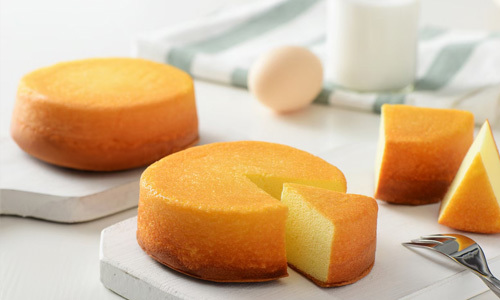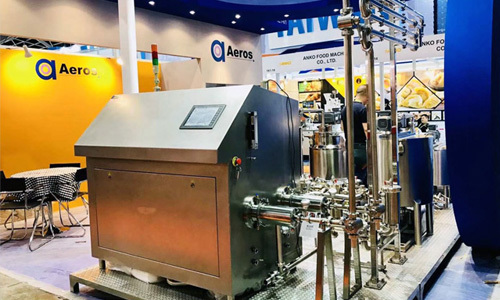Revolutionizing Marshmallow Production: A Comprehensive Guide

2024/10/29
Revolutionizing Marshmallow Production: A Comprehensive Guide
Table of Contents
- 1. Introduction to Marshmallow Production
- 2. The History of Marshmallow Manufacturing
- 3. Key Ingredients in Marshmallow Production
- 4. The Marshmallow Production Process
- 5. Machinery Used in Modern Marshmallow Production
- 6. Quality Control in Marshmallow Manufacturing
- 7. Sustainability Practices in Marshmallow Production
- 8. Future Trends in Marshmallow Production Technology
- 9. Frequently Asked Questions
- 10. Conclusion
1. Introduction to Marshmallow Production
Marshmallows are a beloved treat enjoyed by people of all ages. **Understanding the intricacies of marshmallow production** not only unveils the art of creating these fluffy confections but also highlights the technological advancements that have revolutionized the industry. In this guide, we delve into the entire process of marshmallow manufacturing, examining both traditional and modern methods.
2. The History of Marshmallow Manufacturing
The origins of marshmallows date back to ancient Egypt, where the sap of the marshmallow plant (Althaea officinalis) was combined with honey and nuts. Fast forward to the 19th century, and the first commercial marshmallows began to appear. **The evolution of marshmallow manufacturing** has been marked by innovations in both recipes and production methods, leading to the fluffy, sweet treats we enjoy today.
The Transition from Handmade to Machine-Made
The early marshmallow manufacturing process was labor-intensive, requiring skilled artisans to whip the mixture into the desired consistency. **The introduction of machinery** in the early 20th century drastically changed this landscape, allowing for mass production and increased accessibility of marshmallows.
3. Key Ingredients in Marshmallow Production
The fundamental ingredients in marshmallow production include sugar, corn syrup, gelatin, and flavorings. Each ingredient plays a crucial role in achieving the perfect texture and taste.
Understanding Sugar and Its Role
Sugar not only sweetens the marshmallow but also contributes to its structure. Different types of sugar, such as granulated, powdered, and brown sugar, can be used to create unique flavors and textures.
The Importance of Corn Syrup
Corn syrup helps to prevent crystallization, ensuring a smooth consistency in the final product. It also affects the sweetness and flavor profile of the marshmallow.
Gelatin: The Key to Fluffiness
Gelatin is the ingredient that gives marshmallows their characteristic fluffiness. It is important to use high-quality gelatin to achieve the desired texture. Alternatives, such as agar-agar, are available for vegetarian or vegan marshmallows.
Flavorings and Additives
Modern marshmallow production often incorporates various flavors and additives, such as vanilla, chocolate, or fruit extracts. Natural colorings can also enhance visual appeal.
4. The Marshmallow Production Process
The process of making marshmallows involves several key steps that ensure quality and consistency.
Step 1: Preparing the Ingredients
The first step in marshmallow production is **measuring and preparing the ingredients**. Accurate measurement is crucial for achieving the desired texture and taste.
Step 2: Creating the Sugar Syrup
The sugar and corn syrup are heated to create a syrup, which is then cooled slightly before adding the gelatin. This step is critical in ensuring that the gelatin dissolves properly.
Step 3: Whipping the Mixture
Once the syrup is cooled, it is whipped with the gelatin until it reaches a light, airy consistency. This is where the volume increases significantly, creating the fluffy texture that marshmallows are known for.
Step 4: Forming and Cutting
The whipped mixture is poured into molds or onto a conveyor belt to set. Once cooled, it can be cut into desired shapes and sizes.
Step 5: Coating and Packaging
To prevent sticking, the marshmallows are often coated in powdered sugar or cornstarch before packaging. This step is essential for maintaining product quality during storage and transport.
5. Machinery Used in Modern Marshmallow Production
The advancement of technology has brought about specialized machinery that enhances marshmallow production efficiency.
Batch Mixers
Batch mixers are essential for combining ingredients uniformly. These machines ensure that every batch of marshmallows has the same texture and flavor.
Continuous Cookers
Continuous cookers allow for the consistent cooking of sugar syrups, reducing production time and improving efficiency.
Whipping Machines
**High-capacity whipping machines** are designed to incorporate air into the marshmallow mixture, producing a light and fluffy texture more quickly than traditional methods.
Molding and Cutting Equipment
Automated molding and cutting machines streamline the process of forming marshmallows into shapes, significantly reducing labor costs.
6. Quality Control in Marshmallow Manufacturing
Maintaining high quality in marshmallow production is vital for brand reputation and consumer satisfaction.
Ingredient Quality Checks
Regular quality checks on ingredients ensure that only the best raw materials are used in production.
Process Monitoring
Advanced monitoring systems track temperature and humidity levels during production, helping to identify any issues that may affect the final product.
Tasting Panels
Conducting regular tasting panels allows manufacturers to gather feedback on flavor and texture, ensuring that products meet customer expectations.
7. Sustainability Practices in Marshmallow Production
With growing consumer demand for sustainable products, many marshmallow manufacturers are adopting environmentally friendly practices.
Sourcing Sustainable Ingredients
Choosing ingredients that are sustainably sourced can significantly reduce the environmental impact of marshmallow production.
Reducing Waste
Implementing waste reduction strategies during manufacturing helps minimize the environmental footprint of production processes.
Energy Efficiency in Production
Upgrading machinery to more energy-efficient models can lead to significant reductions in energy consumption.
8. Future Trends in Marshmallow Production Technology
As technology continues to evolve, the marshmallow production industry is poised for transformation.
Automation and AI
The integration of automation and artificial intelligence in production processes can enhance efficiency and reduce human error.
Innovative Flavors and Products
The demand for unique marshmallow flavors and products is on the rise. Manufacturers are exploring new flavor combinations and product lines to cater to diverse consumer preferences.
Health-Conscious Options
With a growing focus on health and wellness, manufacturers are looking to create marshmallows with reduced sugar content and natural ingredients.
9. Frequently Asked Questions
What are the main ingredients in marshmallows?
The primary ingredients in marshmallows are sugar, corn syrup, gelatin, water, and flavoring agents.
How is marshmallow texture achieved?
Marshmallow texture is achieved by whipping the mixture to incorporate air, and by using gelatin, which helps to stabilize the structure.
Can marshmallows be made vegan?
Yes, vegan marshmallows can be made using plant-based gelatin substitutes like agar-agar.
What role does sugar play in marshmallow production?
Sugar not only sweetens the marshmallow but also contributes to its structure and texture by affecting how it sets.
How has technology changed marshmallow production?
Technology has introduced specialized machinery for mixing, whipping, and cutting, resulting in more efficient production processes and consistent product quality.
10. Conclusion
The marshmallow production industry has undergone significant innovations, transforming the way these delightful confections are made. From the careful selection of ingredients to the advanced machinery that ensures efficiency and quality, understanding this process provides valuable insights into a beloved treat. As we move forward, the integration of sustainability and technology promises to reshape the future of marshmallow manufacturing, making it a fascinating field to watch.
Marshmallow production system







